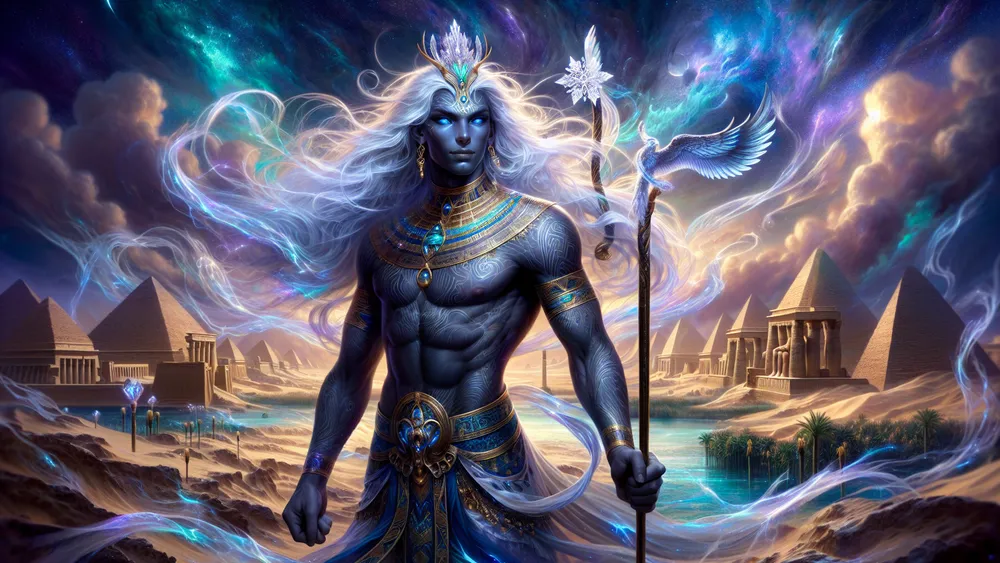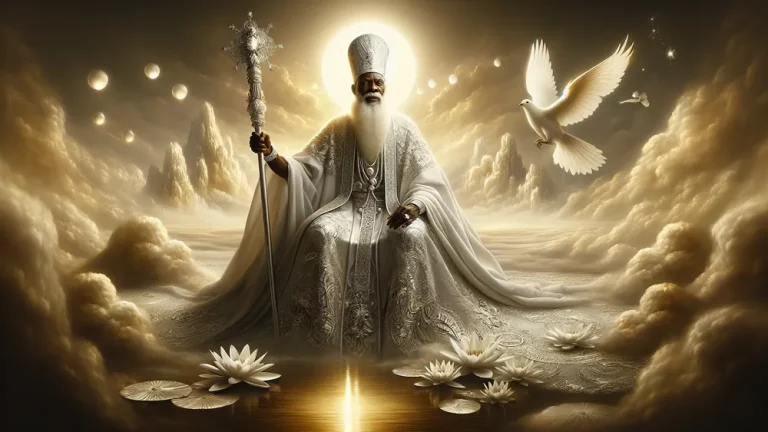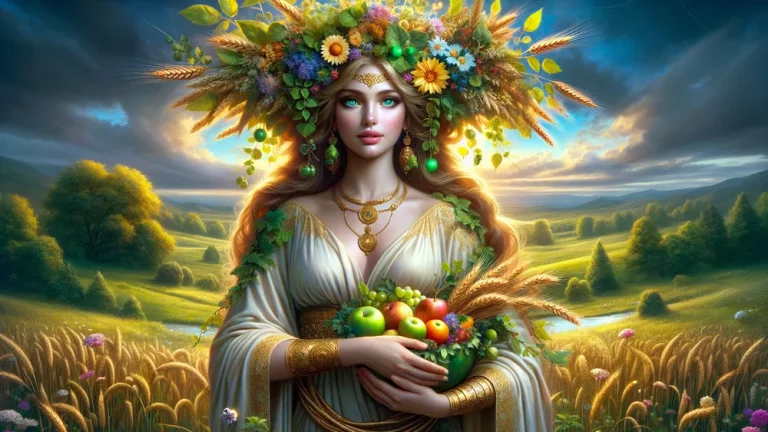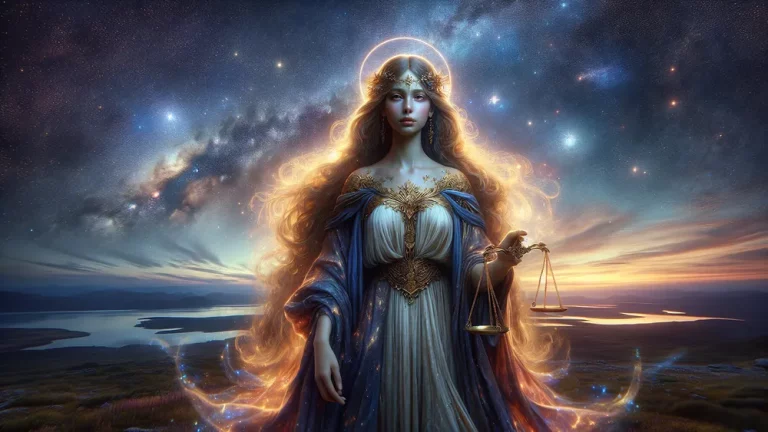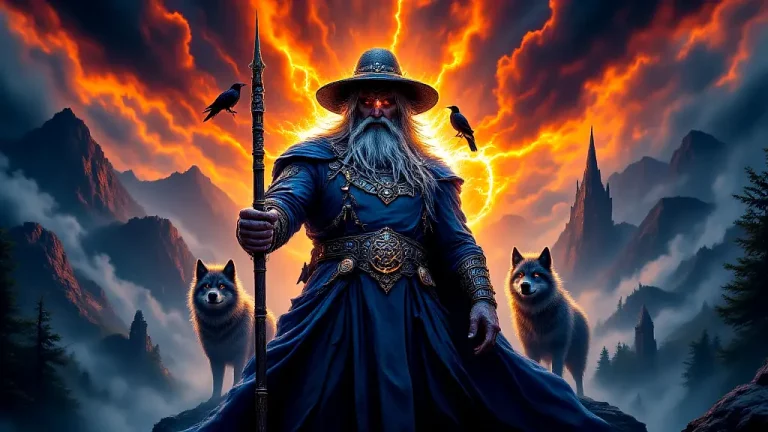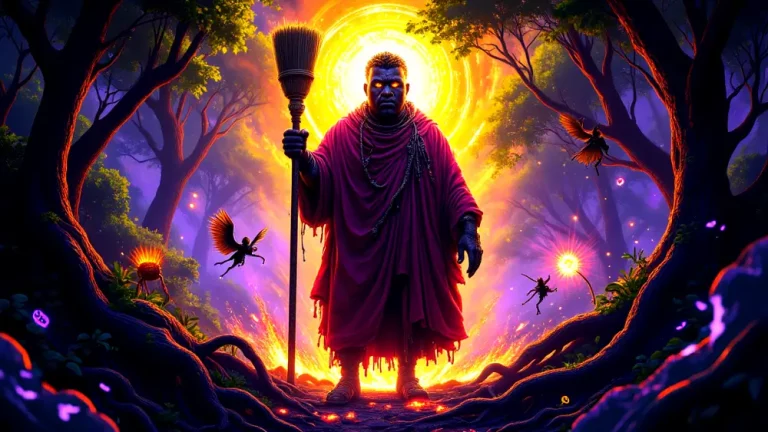Qebui: Egyptian God Of The North Wind
We invite you to look into the story of Qebui, who is from the old tales as an Egyptian god connected to the north wind. Should you not be aware of Egyptian stories, think about Qebui like you might another being believed to control the wind, just like those seen in different cultural beliefs. Here, in this writing, we will ponder over the intriguing story around Qebui.
Key Points:
- Qebui is an Egyptian god of the north wind.
- He is represented as a man with four ram heads.
- Qebui’s role was crucial in ancient Egyptian life for bringing cooling winds.
- Ceremonies and offerings were held to honor Qebui, including food, drink, and incense.
- Modern-day appearances of Qebui can be found in books, movies, and video games.
- Qebui’s importance lies in his link with nature’s powers and bringing balance and order.
- Qebui’s unique role as the god of the north wind set him apart from other Egyptian gods.
He has a start, tasks, and is crucial in the days of ancient Egyptian life. What can be found is information about the stories that involve Qebui, the signs tied to him, and the ways he received honor from the people. As well, consider the pictures of Qebui found in today’s shows and spiritual customs.
You will get a full view of this interesting deity. Therefore, whether the source of your interest is a deep passion for mythology or mere curiosity about old Egyptian thoughts, this view into Qebui’s domain should be both informative and grab your attention.
Qebui: Overview and Key Facts
| Key Information | Details |
|---|---|
| Name | Qebui (also noted as Qebehwy or Qebui) |
| Function | The Deity of the North Wind |
| Appearance | Shown as a man with four ram heads, each looking a different way |
| What It Means | Stands for the north wind, thought of as cool and nice |
| Where He Comes From | Comes from very old Egyptian stories, mentioned in many texts |
| Why He Matters | The north wind was key for cooling and refreshing the area, particularly in Egypt’s hot weather |
| Ceremonies and Offerings | Ceremonies had offerings like food, drink, and incense to honor Qebui |
| Places and Areas for Worship | Specific places or areas for Qebui aren’t well-known, but probably, he was honored in broader events for wind gods |
| Modern-Day Appearance | Shows up in modern times in books, movies, and video games, as well as in neo-pagan spiritual activities |
| Other Wind Gods | Other wind gods in Egyptian stories include Shu (air god) and Apep (linked to chaos and storms) |
Who is Qebui?
Knowing Qebui better, we must look into his start, tasks, and the items connected to him in old Egyptian stories. In detail, we will check these parts.
Where Did Qebui Come From?
Qebui, the god connected to the north wind, has his beginnings deep in the old stories of Egypt. In items like writings and objects, he is often shown as a man with four ram heads, each looking a different way, showing his control over the winds. To make it clearer, think of Qebui as the Egyptian version of the North Wind gods seen in other beliefs, such as Boreas from Greek stories.
In old Egyptian writings, Qebui shows up in many situations, often tied to the cool and refreshing north wind, very important in Egypt’s hot weather. Objects including charms and temple images often display his unique look, underlining his importance in the group of gods. Here are some key points about where he came from and how he is shown:
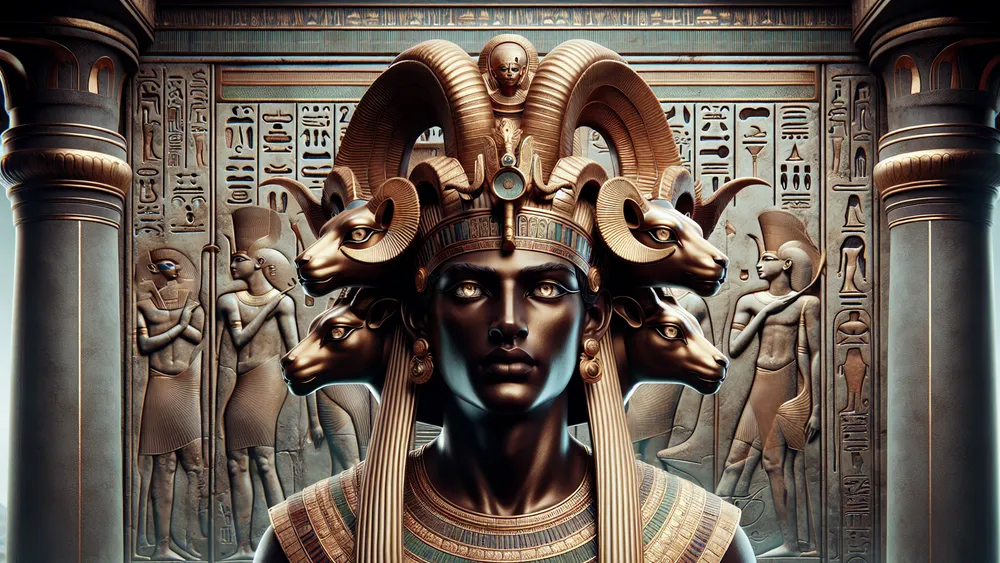
- Story Beginnings: Qebui is part of the larger group of Egyptian gods, frequently linked to other basic gods.
- Descriptions in Writings: Old descriptions call Qebui a helpful force, bringing cool winds from the north.
- Objects: Charms and carvings often show Qebui with four ram heads, each one looking a different way, showing his grip over the winds.
Qebui, the Egyptian god of the north wind, is often represented with four ram heads symbolizing his control over the winds, frequently appearing in writings and objects as a vital deity tied to the refreshing north wind in Egypt’s hot climate.
What Does Qebui Do in Egyptian Stories?
Qebui’s main job in Egyptian stories is as the god of the north wind, a power that was both respected and needed in ancient times. The north wind, known for its cooling and refreshing qualities, was very important in the hot and dry climate of Egypt. People thought Qebui brought this much-needed comfort, making him an important god for the well-being of the land and the people.
Think of the north wind as a natural air cooler, giving a break from the endless heat. In different stories, Qebui is shown as a kind force, guiding the cool breezes that were essential for farming and daily life. His presence reminded everyone of the balance and order that nature could bring to the tough environment of ancient Egypt.
Qebui, unlike other wind gods in Egyptian myths, had a clear role tied to the north wind. For instance, Shu, the god of air, had control over all parts of the air, while Apep was connected to wild and destructive storms. Qebui’s focus on the north wind made him special, highlighting his unique role in the group of gods.
The north wind was especially important culturally since it was often seen as a sign of good luck and wealth. It played a key part in farming cycles, helping to cool the land and water, which then supported plant growth and kept the population alive. Here are some key points about the importance of the north wind:
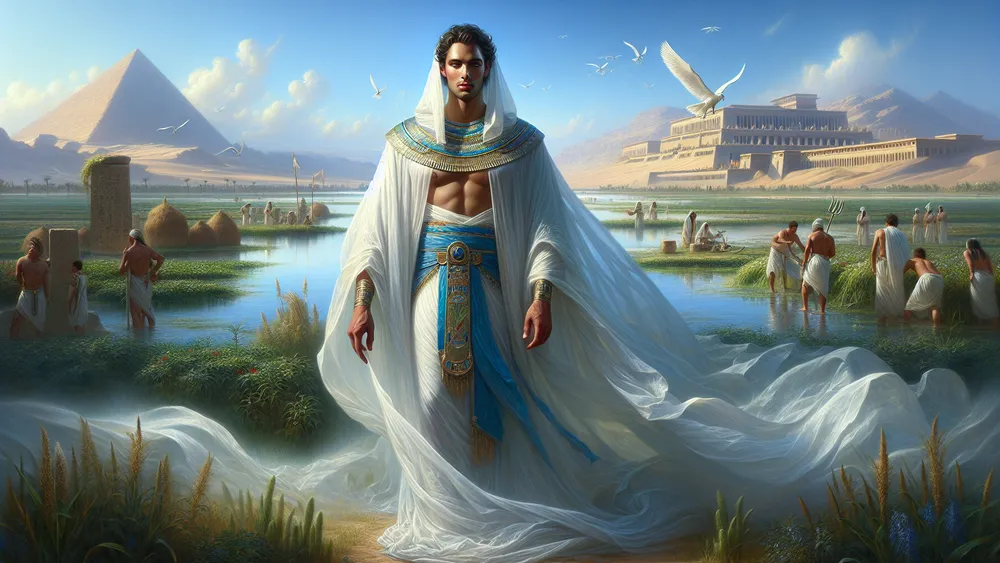
- Cooling Effect: Gave relief from the extreme heat, making life easier.
- Farming Importance: Helped in cooling the land and water, needed for growing plants.
- Sign of Wealth: Often seen as a good force, bringing good luck and balance to the land.
Meanings and Signs of Qebui
Qebui is often shown with four ram heads, each looking in a different main direction, showing his control over the winds. This special look makes him different from other gods and points out his clear job as the god of the north wind. The ram heads do not just look fancy; they stand for strength, stubbornness, and the way to handle the puzzles of the natural world.
Think of Qebui’s signs as an old weather tool guiding and steering the winds to bring order and calm. In old Egyptian art, Qebui may sometimes be shown with a blue or green color, shades often tied to the sky and water, which highlights his link to nature. To help you see how Qebui’s signs compare to those of other Egyptian gods, here is a table that points out the main differences:
| God | Signs and Looks | Importance |
|---|---|---|
| Qebui | Four ram heads looking in main directions | Shows control over the winds, strength, and order |
| Shu | Feather, lion | Stands for air, light, and the sky |
| Apep | Snake | Stands for wildness and chaos |
| Ra | Sun disk, hawk | Stands for the sun, creation, and rulership |
This table gives a clear look, helping you see how Qebui’s signs clearly show his role in the group of Egyptian gods.
Qebui in Ancient Egyptian Culture
Now that we have learned about Qebui’s beginnings, jobs, and signs, let’s go into how he was respected and shown in old Egyptian times.
How Did They Honor Qebui?
In ancient Egypt, respecting Qebui included different rituals and ceremonies made for asking for his favor and making the north wind good. These rituals often took place during the hottest times when cool wind was needed the most. Priests would carry out fancier ceremonies that had chanting songs, burning smells, and giving gifts to Qebui.
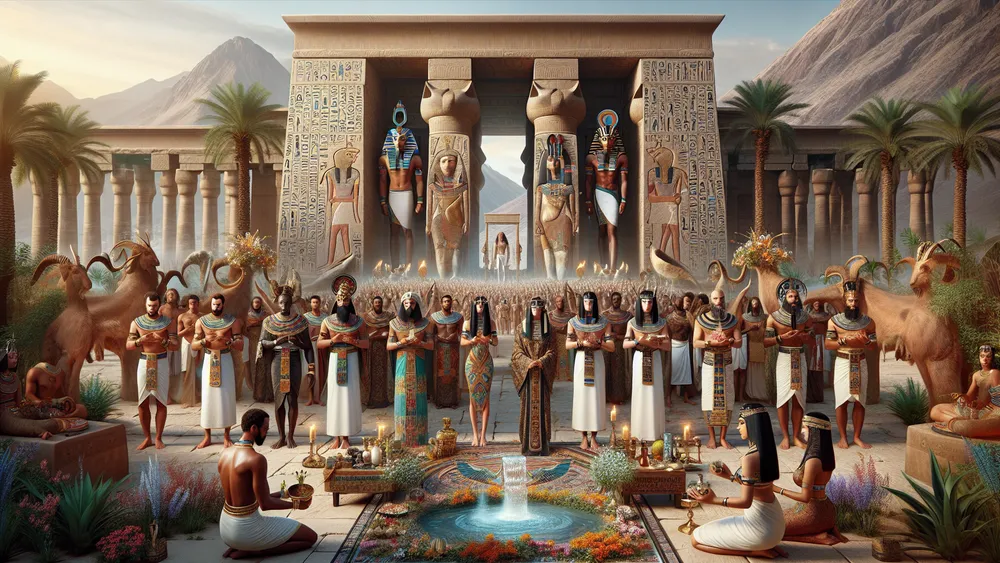
Think of these rituals as a way to “invite” the north wind into their lives, like how we use fans or air conditioners today to cool our houses. These ceremonies were not just about being cool; they also had a godly part, as the north wind was seen as a divine gift that brought order and peace to the area.
Temples and holy places for Qebui were often found in areas where the north wind was very strong, like near the Nile Delta. These places served as main areas for worship and community gatherings. The temples were decorated with carvings and sculptures showing Qebui with his special four ram heads, each facing a main direction. Gifts to Qebui often included items that stood for cleanliness and renewal, like water, flowers, and food. Here is a list of common gifts:
- Water: Stood for cleanliness and the life-giving parts of the north wind.
- Flowers: Meant renewal and the beauty brought by the cool wind.
- Food: Often fruits and bread, standing for giving life and thanks for the wind’s job in farming.
These gifts were a way for the ancient Egyptians to show their thanks and seek the ongoing favor of Qebui, making sure that the north wind would keep blessing their land and lives.
Qebui in Egyptian Art and Stories
In old Egyptian art and writings, Qebui is often shown with his special four ram heads, each looking in a different main direction, showing his power over the winds. These pictures can be found in different kinds, including carvings in temples, statues, and scrolls made of papyrus. For example, in some temple carvings, Qebui stands beside other gods, showing his value in the group of gods.
His pictures are not only in holy places; they also show up in everyday things like charms and pottery, which were thought to have his protective and helpful powers. Think of these art pieces as old “images” that people used to call on Qebui’s being there and favor in their daily life. Qebui’s reach goes beyond pictures into the world of writings and tales.
In old texts, he often is named in songs and prayers, where his job as the bringer of the north wind is recognized. These writings show the importance of Qebui, showing him as a kind power that brings order and good times. His tales and pictures also changed other parts of life, like building design and rituals.
For example, some temples were built to match the main directions, mirroring Qebui’s link to the winds. Moreover, his images and tales may have changed neighboring cultures too, as parts of his pictures can be seen in the art and myths of other old groups. This wide reach shows how important Qebui was in the part of life and soulful world of old Egypt.
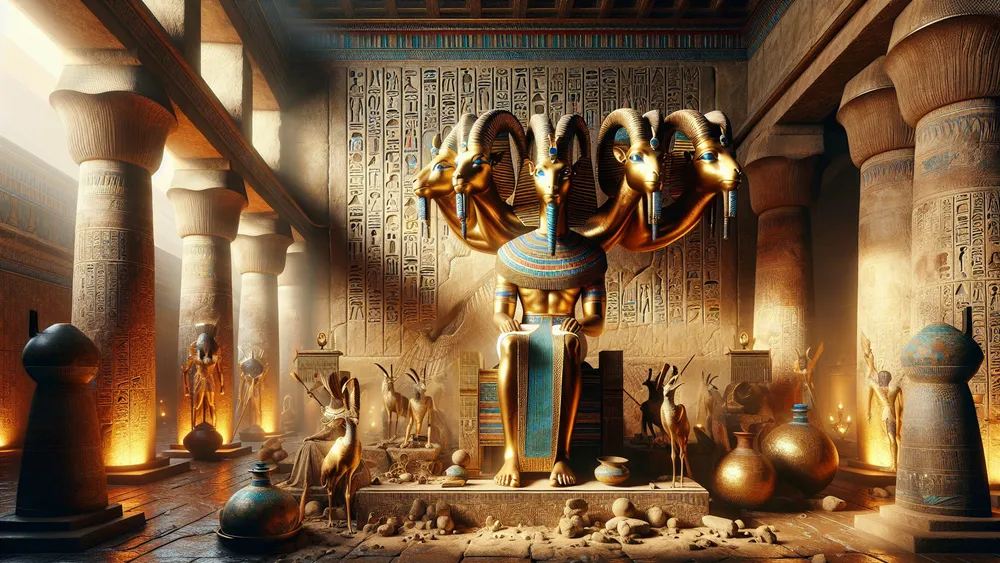
Qebui’s influence extended from temples to everyday objects, reflecting his significance in ancient Egyptian culture and belief systems.
Qebui in Modern Culture
Having looked at Qebui’s meaning in old Egyptian times, let’s now check out how this interesting god still affects current media and ways of spiritual life.
Qebui in Today’s Media
In current media, Qebui has found a place in different types of stories, like books, movies, and video games. For example, in some fantasy novels, Qebui is thought of again as a strong god who controls the winds, often shown with his four ram heads.
Video games, which look at old stories, might have Qebui as a person or a tough enemy, and players must know his mythological background to beat him. These showings help keep the old god alive in shared memory, like how Greek gods such as Zeus and Athena are frequently used in today’s media.
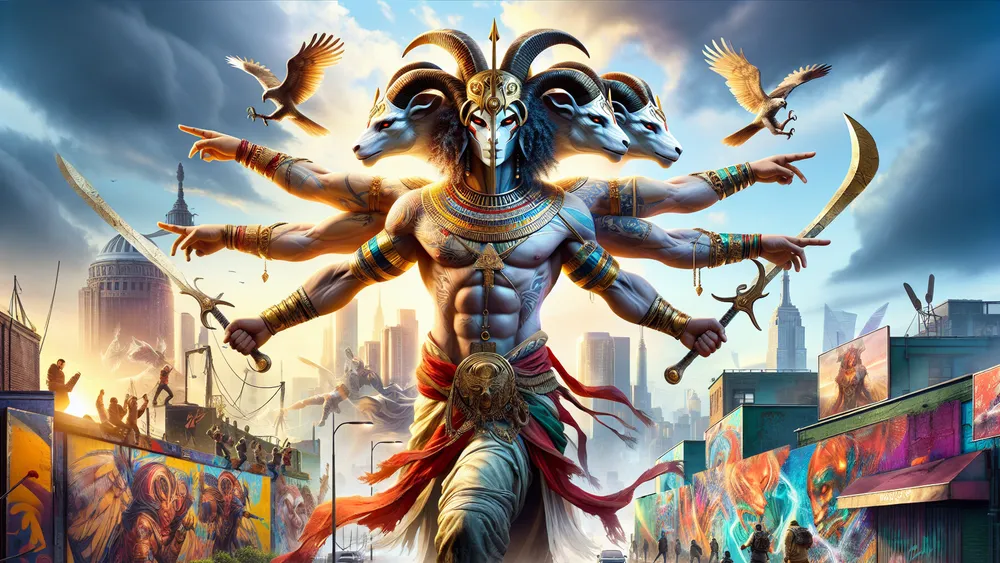
By putting Qebui into these stories, creators not only amuse people but also teach audiences about old Egyptian stories. Qebui’s effect goes into modern art and pop culture too. Artists often get ideas from his special picture style, and they make new ways that mix old parts with modern looks.
For example, you could see Qebui’s four ram heads shown in street art or digital pictures, showing the power and unknown parts of the winds. In pop culture, mentions of Qebui can be found in different forms, from song lines to style designs, where his pictures are used to bring thoughts of old wisdom and natural power.
These modern ways work as a bridge between old and new, letting Qebui’s story keep affecting new people.
Qebui in Modern Spiritual Practices
In current spiritual ways and new beliefs, people often call on Qebui as a god of the north wind. This shows cleaning and a new start and order. Users might include Qebui in their customs by setting up tables with signs linked to him, like small statues of rams or items that show the four main directions.
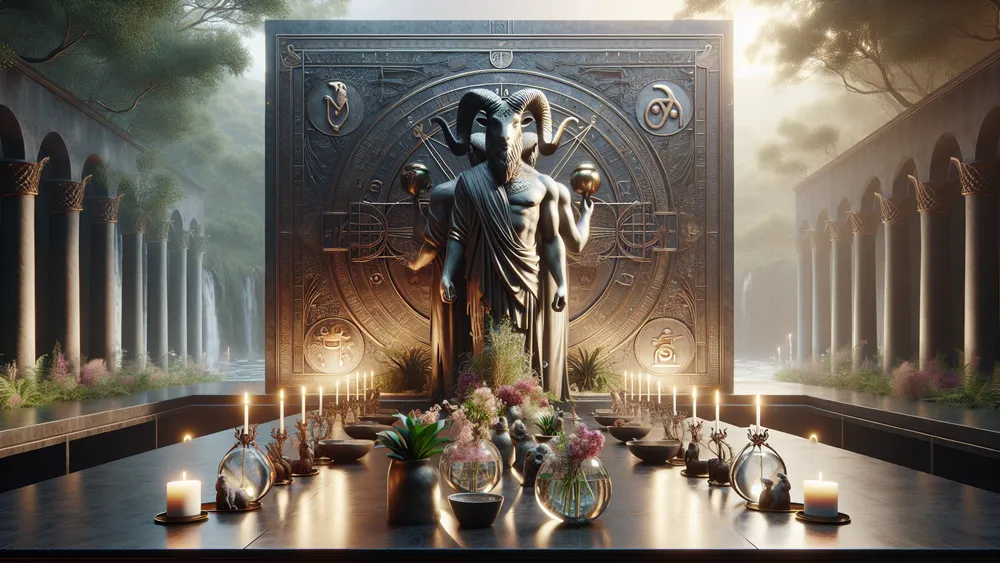
These customs might have repeating words, quiet thinking, and gifts of water and flowers, just as old Egyptians did. Think of this as like how people today might light candles and say prayers to connect with a higher power.
In today’s spiritual groups, Qebui’s importance lies in his link with nature’s powers and the order they bring, making him a strong figure for those looking for balance and spiritual washing in their lives.
Pantheon of Egyptian Mythology Gods
The group of Egyptian myth characters is big and complex, with many gods and goddesses having their own special traits and stories. From well-known gods like Ra, who is the sun god, to less known figures like Qebui, the Egyptian group gives us an interesting mix of myth characters to learn about.
If you want to look into all Egyptian gods, you can find a complete list of all the Egyptian gods that goes over their parts and meaning in old Egyptian culture.
FAQs
1. Who are the other wind gods in Egyptian mythology?
The other wind gods in Egyptian mythology include Amon, who is associated with the hidden wind, and Shu, who represents the air and sky.
2. How is Qebui different from other Egyptian gods?
Qebui is different from other Egyptian gods primarily because he specifically embodies the north wind, whereas other gods have broader or different domains.
3. Are there any famous myths involving Qebui?
Famous myths involving Qebui are relatively scarce in ancient Egyptian mythology.
4. How can I learn more about Qebui and Egyptian mythology?
To learn more about Qebui and Egyptian mythology, you can explore academic books, scholarly articles, and reputable online resources dedicated to ancient Egyptian religion and culture.

